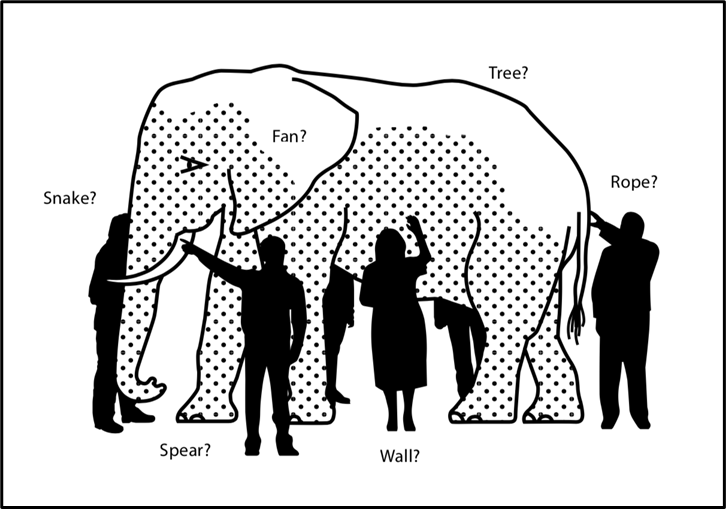Week 3 Overview: Define
Introduction

This week we’re totally focused on the project! We’re at step two, define, where we need to look at the big picture of the design brief to understand and synthesize the “who / what / when / where / why / how” at play in whatever system with which we’re engaging.
Week 3 Project Deliverables
| Project Deliverable + File Type to Submit + Naming Convention |
Description |
| Problem Statement
Miro board exported to jpg week3_problemStatement_[groupName].jpg |
Based on last week’s research findings, each group will construct a problem statement to guide them through the design process. To do this, follow the “current state, gap, future state” model proposed in this article to create a one-sentence problem statement. In a couple auxiliary sentences, your group can optionally include important details that help contextualize the problem statement. |
| Empathy Map
Miro board exported to jpg week3_empathyMap_[groupName].jpg |
Using this article as a reference, groups will use Miro (either from scratch or using template) to create an empathy map. |
| User Persona
Miro board exported to jpg week3_userPersona_[groupName]_[yourName].jpg |
Using this article as a reference, each group member will use Miro (either from scratch or using template) to create a user persona (one persona made by each group member). |
Course Competencies:
- Develop a strong understanding of the design thinking process and how it can be applied in a variety of industry settings.
- Understand the terminology and conceptual models used in design disciplines.
- Recognize the ethical and social dilemmas and obligations of the practice of design.
- Diagnose common adoption barriers in individuals, groups and organizations.
- Participate in and lead innovation in creative and collaborative settings.
- Undertake complex and unstructured problem-solving challenges in unfamiliar domains.
- Identify the necessary skill sets and mindset to practice design thinking.
- Utilize a human-centered approach to research to understand and tackle complex social problems and build empathy for target audiences.
- Create prototypes and/or proof of concepts for user testing.
- Develop and test innovative ideas through a rapid iteration cycle.
Learning Objectives:
- Triage a body of research into a concise problem statement according to the specific constraints of a design brief.
- Think about empathy and related concepts in a new way.
- Consider the possible outcomes of misaligned empathy in design practice.
- Understand the importance of the designer’s critical reflection prior to compassion-motivated intervention.
- Learn to advocate for an audience of users/subjects by deconstructing who they are and what they need.
- Become familiar with different types of design deliverables typically used in professional contexts.
To-Do List: (in sequential order)
- Assignment:
- Problem Statement
- Reading/Viewing:
- How to Write an Effective Problem Statement
- Empathy Map
- Reading/Viewing:
- Empathy Mapping: A Guide to Getting Inside a User’s Head
- User Persona
- Reading/Viewing:
- How to Create a User Persona
- Reading/Viewing:
- Reading/Viewing:
- Reading/Viewing:
- Problem Statement
- Discussion Board:
- Weekly Progress Report